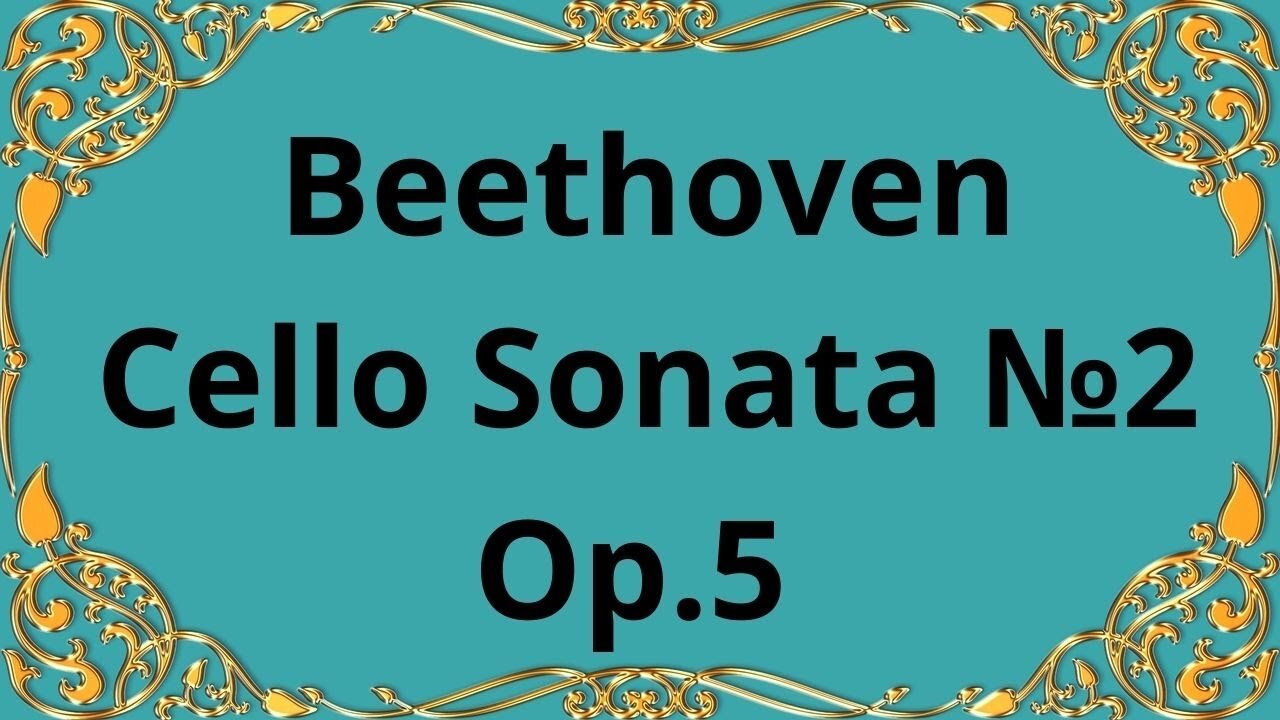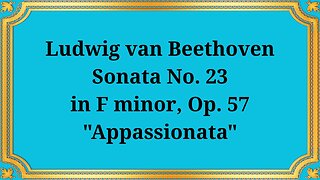Premium Only Content

Beethoven Cello Sonata №2, Op.5
#Beethoven #Cello_Sonata#classical_music
Ludwig van Beethoven's Cello Sonata No. 2, Op. 5, is a groundbreaking work in the history of classical music, showcasing the composer's innovative style and virtuosic writing for cello and piano. Composed in 1796, the Cello Sonata No. 2 is a significant step forward in the development of the cello as a solo instrument.
The Cello Sonata No. 2 is divided into three movements: Adagio sostenuto - Allegro, Rondo - Allegro molto, and Adagio - Allegro vivace. The opening Adagio sostenuto - Allegro is a bold and dramatic movement, featuring a sweeping and melodic cello line that is supported by the piano. The Rondo - Allegro molto that follows is a lively and energetic movement, featuring a fast and playful cello melody that is accompanied by the piano. The final Adagio - Allegro vivace is a powerful and emotional movement, featuring a soulful and poignant cello melody that is complemented by the piano.
One of the most striking features of the Cello Sonata No. 2 is the way in which Beethoven pushes the boundaries of traditional classical music. The piece features unexpected modulations and harmonies, sudden changes in dynamics and tempo, and complex rhythmic patterns that were groundbreaking for their time. Beethoven's use of these techniques adds a sense of drama and excitement to the piece, and his masterful writing for cello and piano showcases the unique capabilities of each instrument.
Another notable aspect of the Cello Sonata No. 2 is the way in which Beethoven elevates the cello to a solo instrument, rather than relegating it to a supporting role. The cello part is virtuosic and demanding, requiring a high level of skill and musicianship from the performer. Beethoven's writing for the piano is equally impressive, with the instrument providing a rich and complex harmonic framework that complements the cello.
The Cello Sonata No. 2 also showcases Beethoven's mastery of musical form. The first and final movements follow a traditional sonata form, with an exposition, development, and recapitulation. The second movement follows a simpler rondo form, with a recurring theme that is interspersed with different episodes. Beethoven's use of form in the Cello Sonata No. 2 is masterful, creating a cohesive and compelling musical narrative.
Overall, the Cello Sonata No. 2, Op. 5, is a groundbreaking work in the history of classical music, showcasing Beethoven's innovative style and exceptional skill. Its daring harmonies, complex rhythms, and virtuosic writing for cello and piano make it a beloved and enduring work in the cello and piano repertoire. The Cello Sonata No. 2 is a testament to Beethoven's enduring legacy as one of the greatest composers in the history of classical music.
-
 23:19
23:19
Classical music_Music Inspiration
5 days agoLudwig van Beethoven Sonata No. 23 in F minor, Op. 57 "Appassionata"
231 -
 2:39:02
2:39:02
The Pascal Show
14 hours ago $0.50 earned'HE'S THE DEVIL!' Former Mother In Law Breaks Silence On Jake Haro & Emmanuel Haro Case
3.68K1 -
 4:47:50
4:47:50
The Why Files
2 days agoCOMPILATION: UFOs and Aliens Vol.2 | They are NOT our friends
41.9K36 -
 5:30:10
5:30:10
SpartakusLIVE
9 hours ago#1 Verdansk Sniper gets HACCUSATIONS because of INSANE Headshots
48.5K4 -
 46:18
46:18
SB Mowing
2 days agoShe was LOSING HOPE but this SURPRISE CHANGED EVERYTHING
33K41 -
 LIVE
LIVE
ItsLancOfficial
9 hours agoWE LIVE 🔴WE LIVE 🔴 SUNDAY SUNDAYS!!!!!!! TARKOV
482 watching -
 4:09:32
4:09:32
EricJohnPizzaArtist
6 days agoAwesome Sauce PIZZA ART LIVE Ep. #59: Are You Ready for some FOOTBALL with GameOn!
30.8K7 -
 1:21:43
1:21:43
Jake Shields' Fight Back Podcast
14 hours agoJake Shields and Paul Miller!
65.3K110 -
 1:20:41
1:20:41
TRAGIKxGHOST
6 hours agoTrying to get SCARED tonight! | Are You SCARED!? | Screams Beyond Midnight | Grab a Snack
22.9K2 -
 5:21:24
5:21:24
StuffCentral
7 hours agoI'm baaack (no you can't play with me.. unless you a healer)
24.1K4